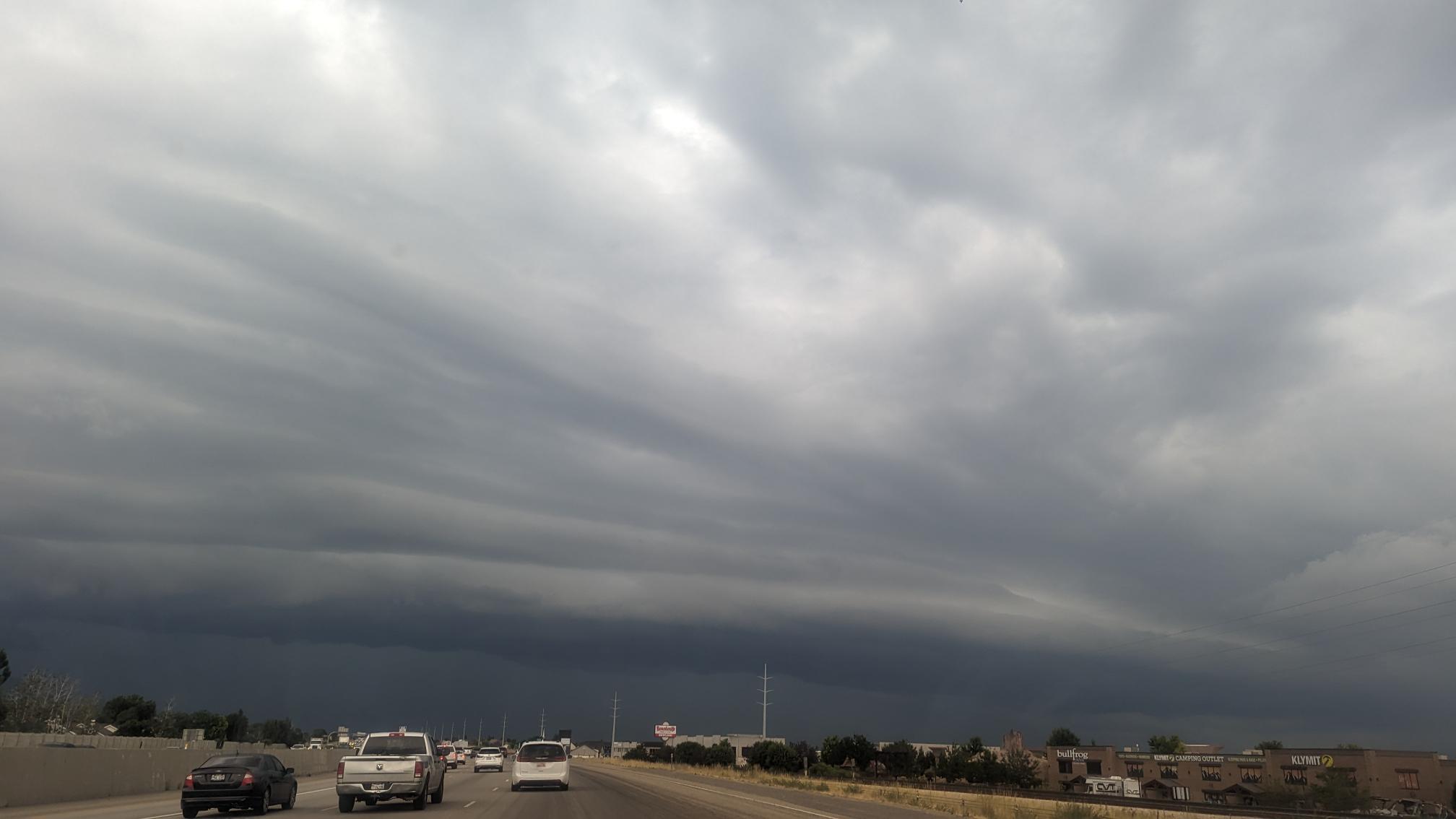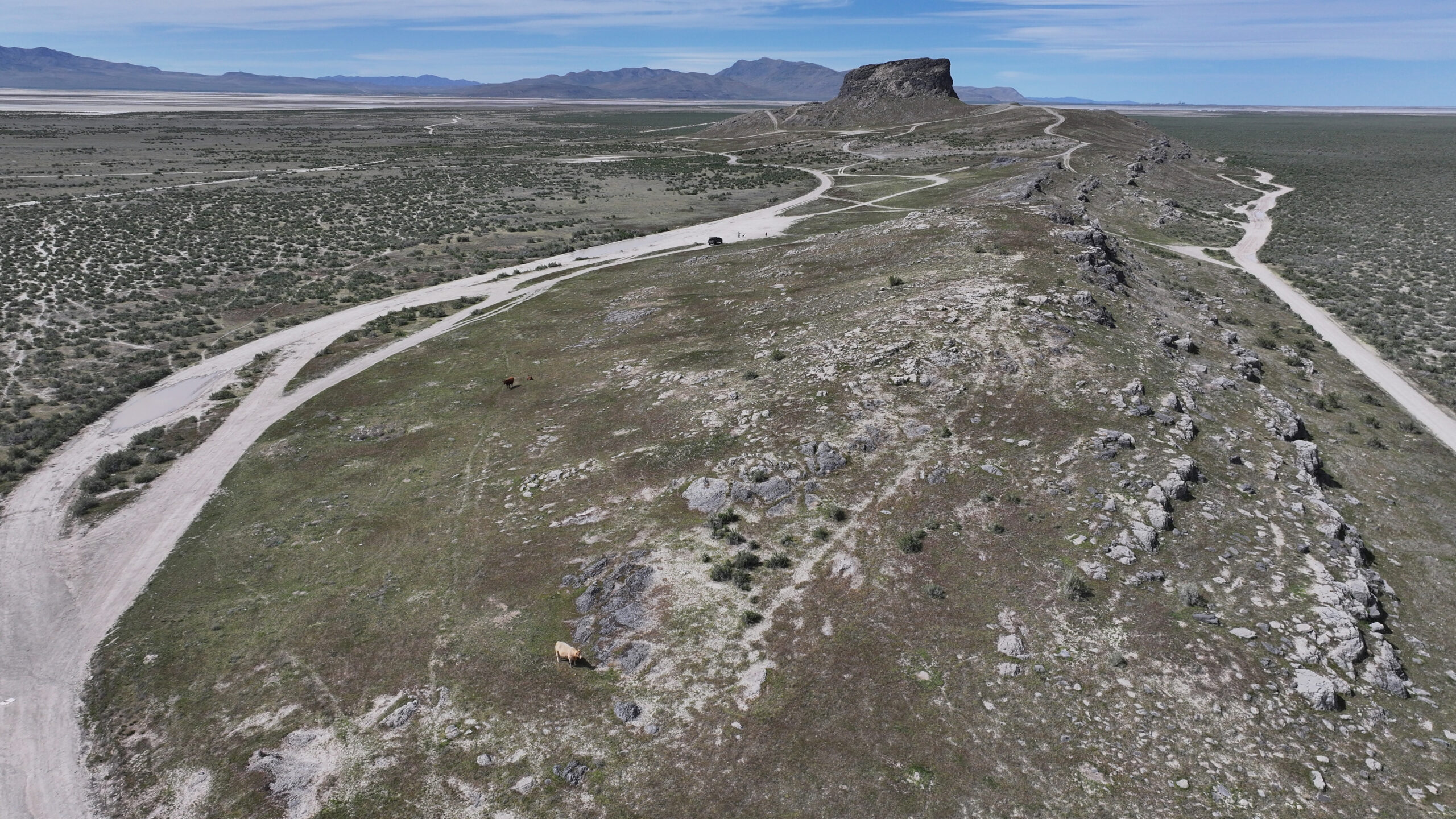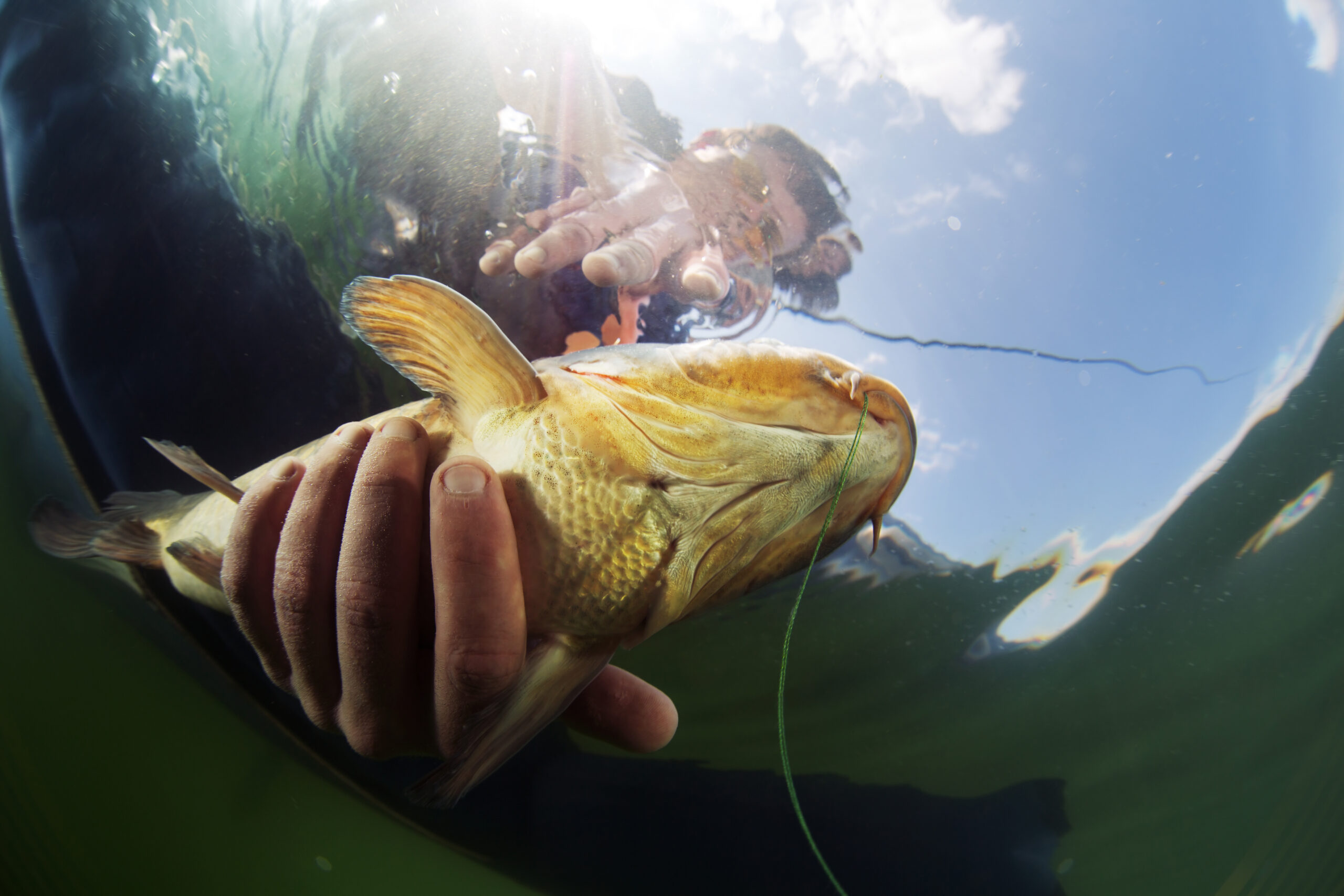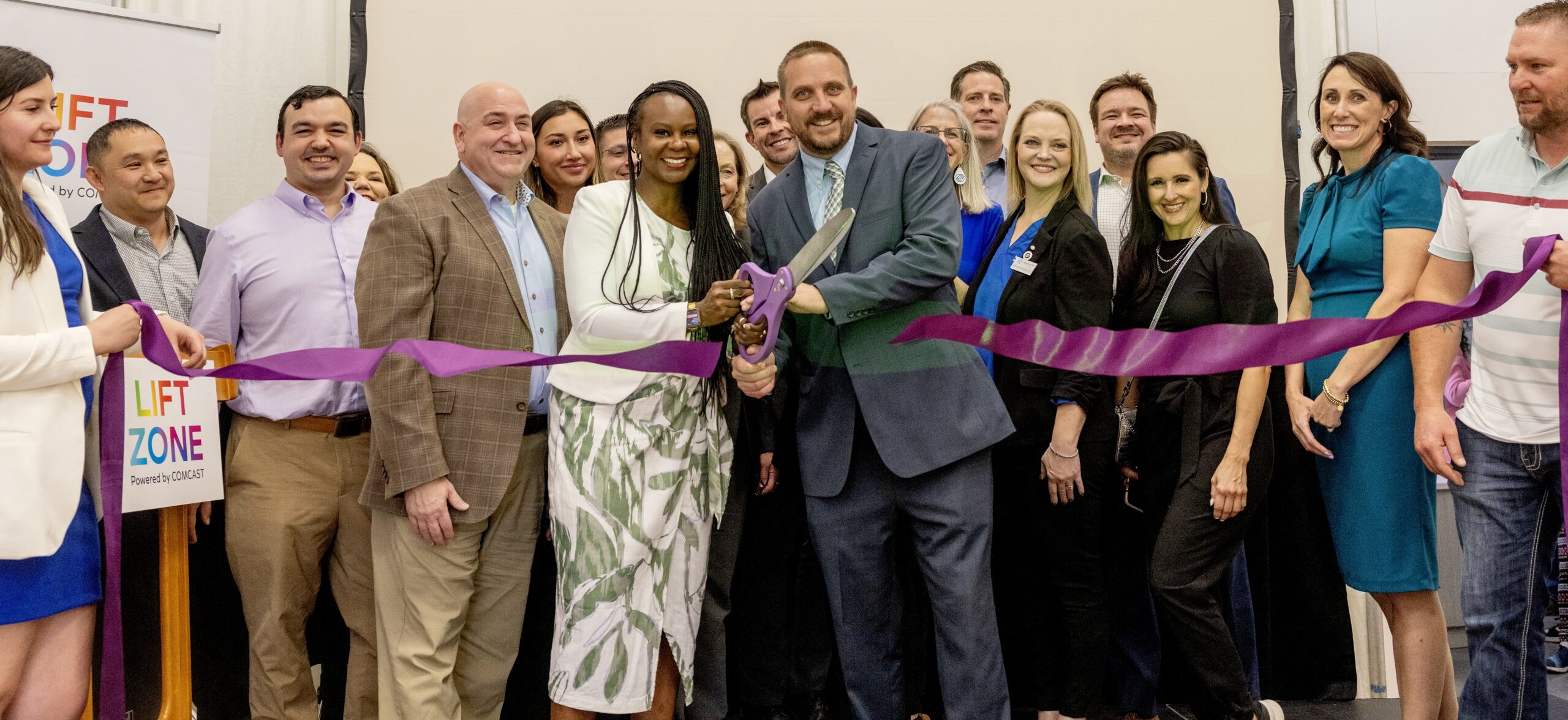So far, Utah’s water banking is showing the path beyond ‘use it or lose it’
Nov 13, 2023, 5:30 AM | Updated: May 30, 2024, 2:28 pm
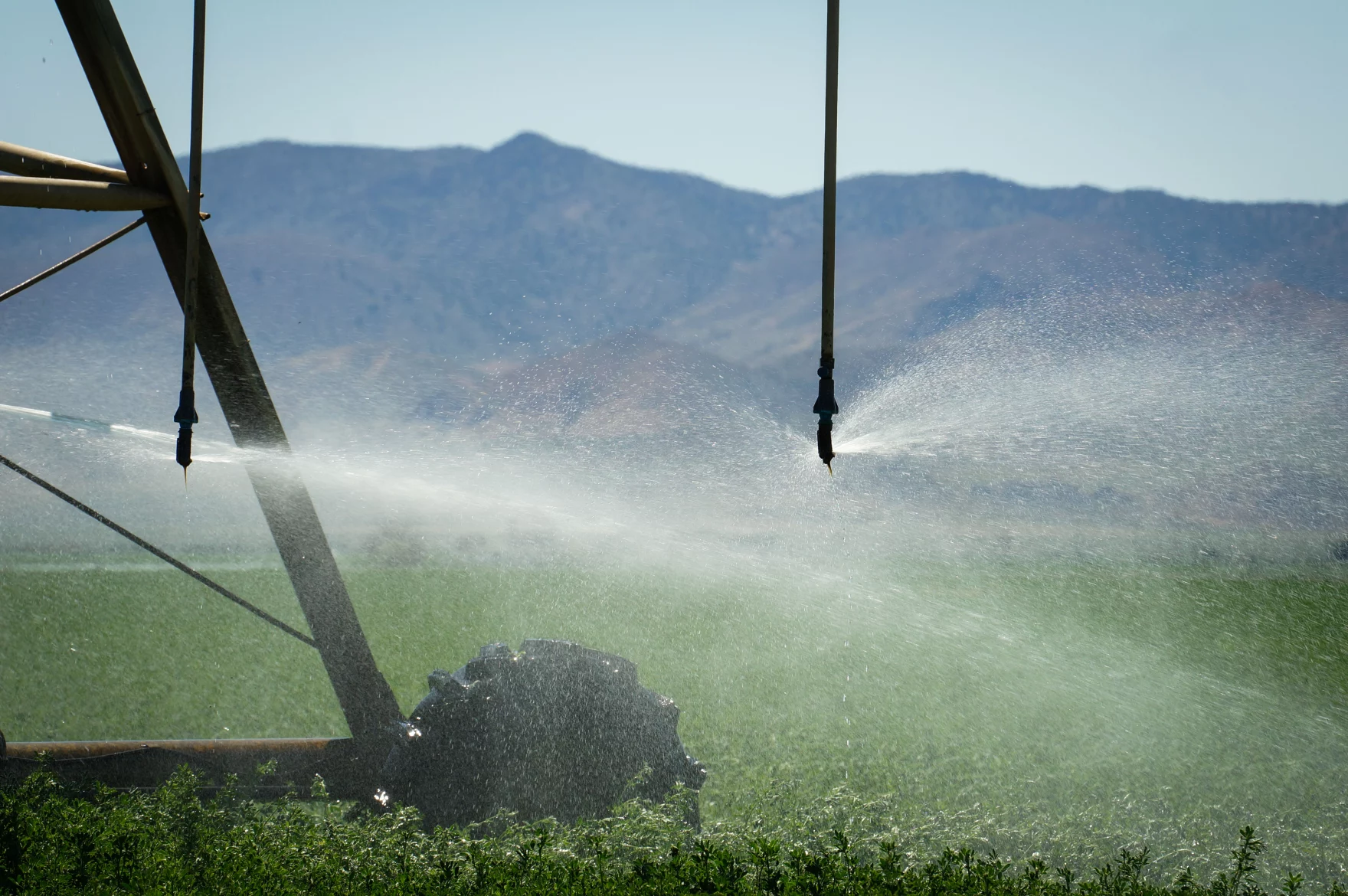
A center pivot irrigation system sprays water on a crop field in Beaver County, Utah, July 6, 2023. The state’s new water banking program provides an avenue for farmers and other water users to lease some of their water to others without losing their rights to it. (David Condos /KUER)
This article is published through the Great Salt Lake Collaborative, a solutions journalism initiative that partners news, education, and media organizations to help inform people about the history and the plight of the Great Salt Lake.
In a dry state like Utah, there’s not always enough water to go around. But when there is extra water, how exactly do you spread it around?
Over the past three years, the state’s water banking program has been testing the processes for doing just that. The program provides avenues for a water rights holder with extra water to lease it to someone else in their area without losing the right to that water.
It started with the Utah Water Banking Act, which the Legislature approved in 2020 to promote voluntary, temporary, local water transfers. The state is now starting to see positive results from the four pilot projects that put the idea into practice, as well as working out any bugs.
“What we learned is that the barrier is not [a lack of] interest,” said attorney Emily Lewis, the water bank program manager. “The barrier is where to start. Like, how do we help people learn where to start and then how do we create a process?”
The program benefits water users by answering those questions, she said, and streamlining the necessary paperwork to make the water transfer agreements happen.
It also protects rights holders from forfeiting their water allocation. The “use it or lose it” aspect of Utah water law has historically meant that rights holders risked losing any unused portion. That could lead to a situation where someone might use more water than they need in order to avoid giving up the right to it in future years.
The water bank transfers are intended to be hyperlocal and not a solution to big statewide water issues, Lewis said. But if enough Utahns get on board, those small, local changes could add up to help move the state closer to sustainability.
“We’re in a transition. We have less water, more people and more demands,” Lewis said. “There are extremely disruptive ways that we can reallocate water between people and make everyone mad and end up in litigation and end up fighting. Or there are constructive ways that we can deal with transition.”
One primary way these water banks could have an impact is with irrigated agriculture.
As Utah pushes farmers to get more efficient, Lewis said, the program would give them the option to lease out the extra water they conserve, make money from it and still hold onto the rights.
The water banking pilot projects offer some glimpses of how this might look.
In northern Utah’s Cache Valley, one project resulted in a two-party agreement to shore up supplies in the latter part of the growing season. The Hyrum Irrigation Company will send some surplus water in the Hyrum Reservoir downstream to the Wellsville-Mendon Conservancy District where farmers will have the option to use it.
In the Vernal area, another project turned into an online bulletin board to connect people for water swaps. It’s called The First Water Bank of Utah, and it launched in October.
Ryan Goodrich, general manager of the Ashley Valley Water and Sewer Improvement District in Vernal, said many farmers in his area have already done some form of water leasing before, so this won’t be a new concept to them. It’ll just be a matter of getting them acquainted with the new virtual marketplace.
“Adoption of technology always takes time,” Goodrich said. “Forty years ago, nobody would have ever thought that my grandpa was going to send me a text message on a Thursday evening, but that happens all the time now.”
The water bank could potentially be good news for residential water customers, too. During the severe drought of 2020-2021, for example, he said many farmers were stuck in a position where they had some leftover water but not enough to grow another round of crops. If this bank had been in place then, he said, that water could have gone to a city.
“That would have been a perfect opportunity for a [drinking water] district to turn around and say, ‘Hey, I’m going to do a one-year lease of your water.’ … Otherwise, it would have just gone down the stream and there would have been no use and no benefit to anybody.”
Beyond spreading Utah’s limited water supply between farms and towns, the banking program also opens the door to environmental groups.
Sue Bellagamba is based in Moab as the Canyonlands regional director for The Nature Conservancy, one of the groups involved in the Price River Valley pilot project.
Prior to the water banking act, she said, there wasn’t a path for nonprofit organizations to hold water rights for environmental benefit. But now, that’s possible.
“The benefit of the water bank is water can be leased for any purpose authorized under the act, including instream flows,” she said. “That’s what excited us.”
The Price River project became the state’s first contract water bank in 2022, and it expects to begin transferring water in 2024. Local farmers can choose to rest their fields and lease that water to The Nature Conservancy, Trout Unlimited or the state of Utah, who can then let it flow downstream to benefit the ecosystem.
Increasing streamflow in the Price River will directly benefit the endangered and threatened fish species there, Bellagamba said. But as part of the Colorado River Basin, it can also have a trickle-down effect to help strained water supplies regionwide.
“We need all the tools in the toolbox to help solve the water crisis unfolding in the Colorado River. This is a new tool … and hopefully can be a model that can be replicated elsewhere.”
The fourth project north of Park City hasn’t resulted in a water leasing agreement yet. They have, however, begun measuring local streamflows, which water bank program manager Lewis said taught the state the value of having solid data to base these agreements on.
Utah now hopes to expand the water banking program and has launched a new website with tools to help interested parties explore the process. The best solutions for big problems like water scarcity in Utah won’t come from the top, she said, but from the people who know their community’s challenges best.
“I foresee people using these tools to really understand water marketing for themselves and entering their own leases,” Lewis said. “It’s really kind of a laboratory of democracy platform.”
Related:
- Good news for the Great Salt Lake, Utah’s snowpack now 201% of normal
- How a change in Utah water law will help Great Salt Lake


